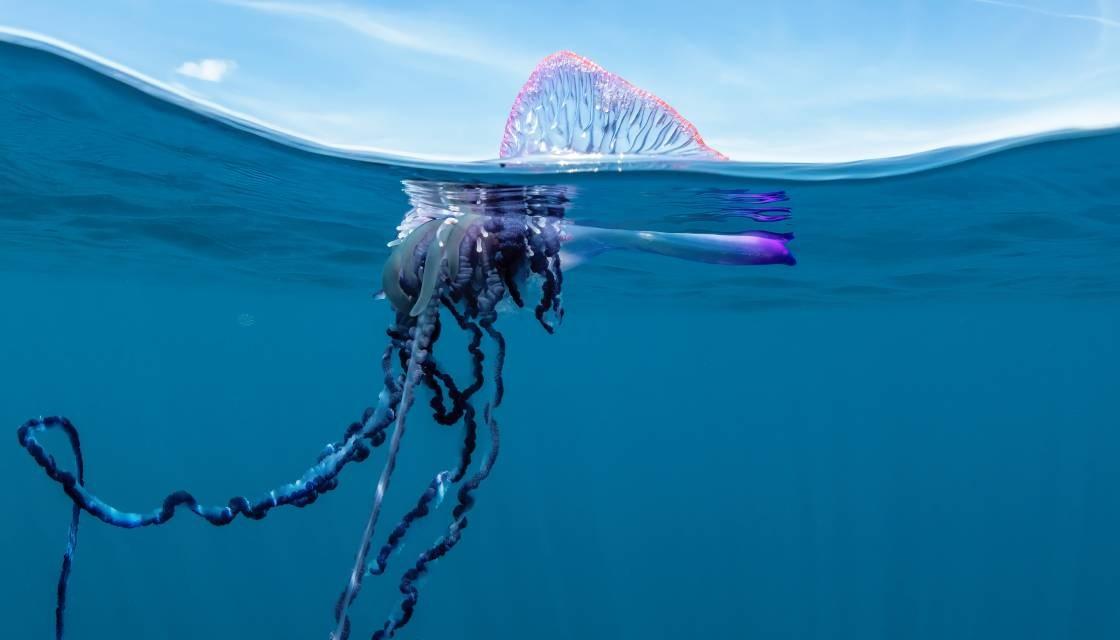
An increase in venomous jellyfish on Auckland's west coast beaches is prompting warnings to swimmers ahead of a hot summer.
It comes as high numbers of bluebottle jellyfish have been spotted across the sand on several popular swimming spots.
Despite their deceiving colours of bright pink, purple and blue, NIWA emeritus researcher Dennis Gordon warns the jellyfish can produce a "very painful sting", despite being "really beautiful".
"They really do sting and their tentacles can trial several metres behind them," he said. "Beneath the surface of the water, their tentacles stick to your skin."
He said the chances of being stung are common if there is a lot of them about.
"If there's a lot of them, it's best to just not go for a swim - perhaps go to the east coast instead."
He said those who do plan on getting in the water should be cautious and wear a wetsuit. However, a wetsuit still won't keep everyone safe from the sneaky stingers, Gordon warned.
"Some people will wear wetsuits, like surfers, but they could still wrap around your face and sting you."
He said there are two key factors to seeing the increase in bluebottle numbers at this time of year.

"As soon as the days start to get longer and there's more daylight, you get a bloom of more plankton," he explained. "When there is more plant plankton, there's more animal plankton, which means you get more shrimps and things - and jellyfish feed on those small crustaceans.
"Every year we get these strandings on the west coast beaches and it's hard to be precise on whether these numbers will continue to grow but it's possible," he said.
Gordon said at warmer times of the year, there is "the likelihood of seeing more of them".
"If you're getting those warmer temperatures and more sunlight you can definitely expect more. "There's more plankton in the summer than the winter, because there is a lot more food in the water."
Gordon said it's not surprising to see so many being washed up onto the sand.
"El Niño is also accompanied by cooler than usual sea temperatures, so in the sea you wouldn't necessarily see more in the water," he explained.
He said there's a reason the bluebottles are moving to the west coast.
"Given the wide distribution of the species in both hemispheres, I think it's because of the prevailing winds in the southern hemisphere. It moves from west to east, though those westerlies are prevailing and piling up on the west coast beaches."
He said because the jellyfish are light and contain a bubble of Co2, the wind steers them into the shore and "drives them onto those beaches".
"A regular jellyfish is under the water but part of this jellyfish floats and catches the wind."
In terms of its relationship, the bluebottle is in the same group of stingers as jellyfish, he said. However, it is a colony and not an individual.
He warned the stinger is dangerous to touch and could even sting when on land.
"Once they are washed up, they tend to stay there but, even though they are dying, their stings can stay active.
"It's safe to touch the 'float' but not the tentacles.
"People should just be careful."
Auckland Regional Public Health Service (ARPHS) said the bluebottle jellyfish produces "a nasty sting" and urged people to stay out of the water if they are present.
Symptoms of a jellyfish sting:
- A burning, stinging sensation on your skin
- A tingling or numbness where the sting occurred
- The skin in the area where the jellyfish stung turning red or purple
More severe symptoms can include nausea, dizziness, vomiting and difficulty breathing.
Self-care for jellyfish stings:
- Flush the stung area with fresh water or sea water to remove the tentacles
- If tentacles are still attached use a dry towel to remove them
- Immerse the stung area in heated tap water for 15 to 20 minutes
- Take pain relief following hot water immersion
ARPHS warns sting victims should not use vinegar or methylated spirits as it can make the sting more painful.


